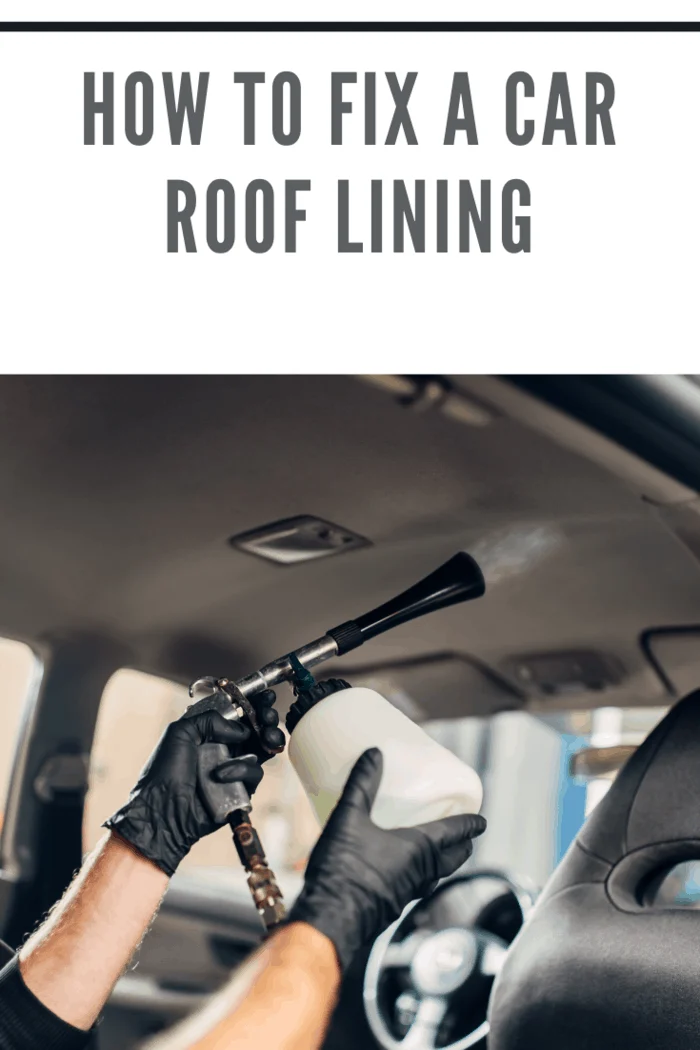How to Fix a Car Roof Lining: Your Ultimate Guide
The roof lining of your car is not just a fabric; it’s a crucial part of your vehicle’s interior aesthetics and comfort. Over time, though, it can start to sag or come loose, detracting from your car’s appeal. Whether you’re dealing with a minor sag or a full-on headliner catastrophe, here’s how to fix a car roof lining with easy-to-follow steps and insider tips.

How to Fix a Car Roof Lining
Understanding Roof Lining Issues
Your car’s roof lining, or headliner, can sag for various reasons. Excessive heat from the metal roof can cause the adhesive holding the fabric to the board beneath it to melt. Additionally, mishandling or lack of maintenance can contribute to this problem. If you notice the fabric sagging, you have two options: call a professional or tackle the issue yourself. Let’s explore how you can fix a car roof lining at home.
1. Using Fabric Glue for Quick Fixes
Perfect for Minor Sagging
If the fabric is sagging from the corners or edges, fabric glue can be your best friend. Here’s a step-by-step guide to using fabric glue:
- Choose the Right Glue: For the best results, opt for a fabric glue that’s available in a spray can. This type of glue ensures an even application.
- Apply the Glue: Hold the fabric in place with one hand and spray the glue on the fabric’s underside with the other hand.
- Press and Secure: Press the fabric back into place gently with your palms. Allow it to dry completely.
Fabric glue is ideal for small areas where the fabric is coming loose, especially along the edges.
2. Tackling Sagging with Sequin Pins
Ideal for Larger Areas
If you encounter sagging in the middle of your roof lining, sequin pins can be a lifesaver. These are clear-headed pins that can temporarily hold the fabric in place.
- Pin the Fabric: Insert the pins through the sagging fabric into the board beneath.
- Secure and Hide: Make sure the pins are evenly spaced and positioned where they won’t be too noticeable.
This method is a good quick fix, but it’s best used for temporary solutions or if you need a fast fix before seeking a professional repair.
3. Using Saggy Stoppers
For a Firm Hold
Saggy Stoppers, also known as clear-headed twisted pins, are a more durable option compared to standard sequin pins. They provide a secure hold and are less likely to damage the fabric.
- Insert the Pins: Place the pins where the fabric sags, making sure they penetrate the fabric and board effectively.
- Ensure Stability: Check to ensure that the fabric is firmly held in place.
These pins are particularly useful for fixing sagging in multiple areas and can hold the fabric in place for a longer period.
4. Repairing with a Steam Cleaner and Paint Roller
Effective for Weak Adhesive
If you suspect that the adhesive has weakened, a steam cleaner combined with a paint roller can be effective.
- Steam the Adhesive: Use the steam cleaner to heat and melt the old adhesive under the fabric.
- Roll and Press: Use the paint roller to press the fabric firmly back onto the board.
This method works well for corners and edges, but if the sagging is extensive, the glue might be too hardened for this technique to work effectively.
5. Using Double-Sided Tape
A Temporary Solution
Double-sided tape is an easily accessible option but works best for short-term fixes.
- Cut and Apply: Cut the tape into small pieces and stick them to the fabric’s underside.
- Press Firmly: Place the fabric back into position and press down firmly to ensure it adheres properly.
While effective for a temporary solution, double-sided tape should not be relied upon for a long-term fix. For a permanent solution, professional help is recommended.
6. Replacing the Entire Roof Lining
When All Else Fails
If the fabric is sagging extensively or the previous methods haven’t worked, replacing the entire headliner might be necessary.
- Remove the Old Lining: Carefully remove the old fabric and board from your car.
- Install New Fabric: Fit a new fabric headliner into place, securing it as per manufacturer instructions.
Replacing the roof lining can be a significant investment, but it’s essential for maintaining your car’s interior quality.
